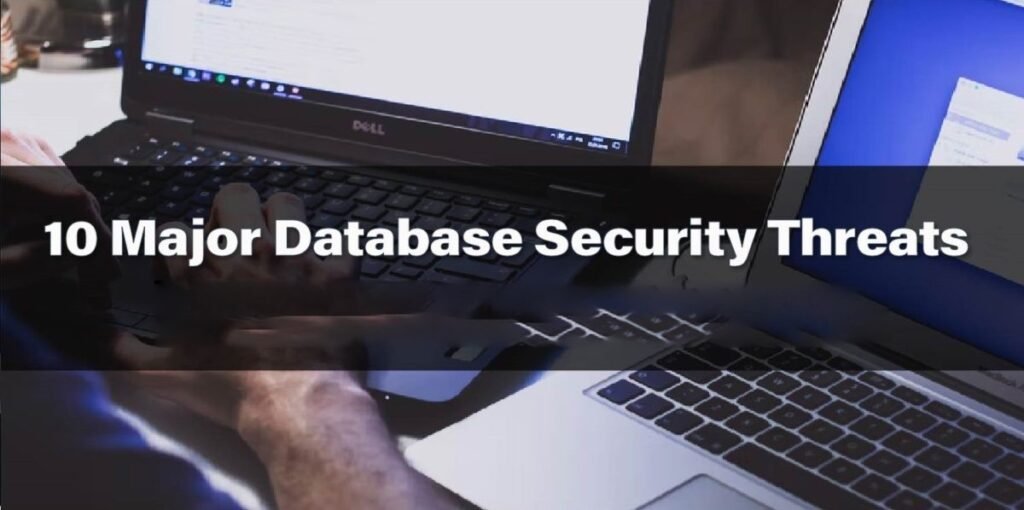The advancement of big data & data analytics techniques have made databases a priority target for malicious hackers & cybercriminals. What are the top 10 database threats?
Thanks to the advancement of big data and data analytics techniques , databases have become the heart of any organization, around which the entire business strategy is defined. But this growing importance for companies has also made data a priority target for threats from hackers, malicious insiders and cybercriminals. What are the top 10 database threats?
What do we call risk or threat in a database?
A risk or threat to a database is the potential danger that it will suffer alteration, leak, theft or loss of data due to access to information by cybercriminals through techniques such as malware .
Furthermore, new technologies, such as artificial intelligence , have led to the evolution towards more mature data protection, but have also helped cybercriminals to be increasingly prepared and develop more sophisticated attack techniques.
The 10 most important database threats
Inadequate permission management
When someone is granted database privileges that exceed their job requirements, it creates unnecessary risk. This occurs when the privilege control mechanisms of the work roles have not been well defined or maintained, and the desirable Zero Trust principle is not applied .
Abuse of privileges and unauthorized access
Users can abuse legitimate database privileges for unauthorized purposes such as stealing confidential information. Once information records reach a client machine, the data is exposed to various breach scenarios.
SQL database injection attacks
A successful SQL injection attack can give someone unrestricted access to an entire database. If the injected sequences are executed through the database, critical data stores can be viewed, copied or modified.
Malware
Cybercriminals, state-sponsored hackers or spies use advanced attacks that combine multiple tactics, such as phishing and malware, to penetrate organizations and steal their confidential data.
Weak audits
Automatic recording of database transactions involving sensitive data should be part of any database implementation. Failure to collect detailed audit logs of this activity can pose a very serious risk to the organization on many levels.
Storage media exposure
Backup storage media is often unprotected, which is why numerous security breaches have led to the theft of disks and tapes. Furthermore, failure to audit and monitor low-level access activities by administrators on sensitive information can put data at risk.
Exploitation of vulnerabilities and misconfigured databases
It is common to find vulnerable and unpatched databases, or discover others that have default accounts and configuration parameters. Attackers know how to exploit these vulnerabilities to launch attacks against companies.
Sensitive data poorly managed
Many companies struggle to maintain an accurate inventory of their databases and the critical data contained within them. Sensitive data in these databases will be exposed to threats if the necessary controls and permissions are not applied.
Denial of service attacks
Denial of Service (DDoS) is a category of attack in which intended users are denied access to network applications or data. The motivations are often linked to extortion scams in which a remote attacker will repeatedly attack servers until the victim complies with their demands.
Insufficient security training and awareness
Internal security controls are not keeping pace with the growth in data volume and many firms are ill-equipped to deal with a security breach, due to a lack of technical knowledge to implement security controls, policies and training.
Database Security Measures and Practices
Since databases are almost always accessible from the network, any security threat to any component internal to or part of the network infrastructure is also a threat to the database, and any attack that affects the device or station A user’s work schedule can be a threat to the database. Therefore, database security should be extended beyond the boundaries of the database itself by following, for example, these practices:
- Identify sensitive data.
- Monitor access to databases.
- Use information encryption techniques.
- Manage user access rights and remove excessive privileges and inactive users.
- Train employees in risk mitigation techniques with best practices around Internet and email use, and password management.
- Assess database vulnerabilities, identifying compromised endpoints and classifying sensitive data.
- Monitor all database access activity and usage patterns in real time to detect attacks and data leaks.
- Automate auditing with a database auditing and protection platform.
- Block malicious web requests.
- Archive external data, encrypt databases, and mask database fields to hide sensitive information.
- Make backups or backup copies of the information.
Also Read: What Is Clickjacking, Learn How To Prevent It, Step By Step Guide
Legislation for the protection of databases
The evolution of data analysis has made it increasingly important for the company, but also more exposed to cyberattacks due to its continuous examination and use.
To guarantee data security at a legal level, the European Union has developed specific regulations for the protection of personal data known as the General Data Protection Regulation (GDPR) . This regulation establishes a series of measures to ensure that personal data is treated fairly and transparently. Furthermore, the GDPR establishes the obligation to obtain explicit consent from individuals before processing their personal data.
In relation to big data, the GDPR establishes that the processing of personal data must be “adequate, relevant and limited to what is necessary in relation to the purposes for which it is processed.” It also establishes that individuals have the right to be informed about the processing of their personal data and to request its deletion.

